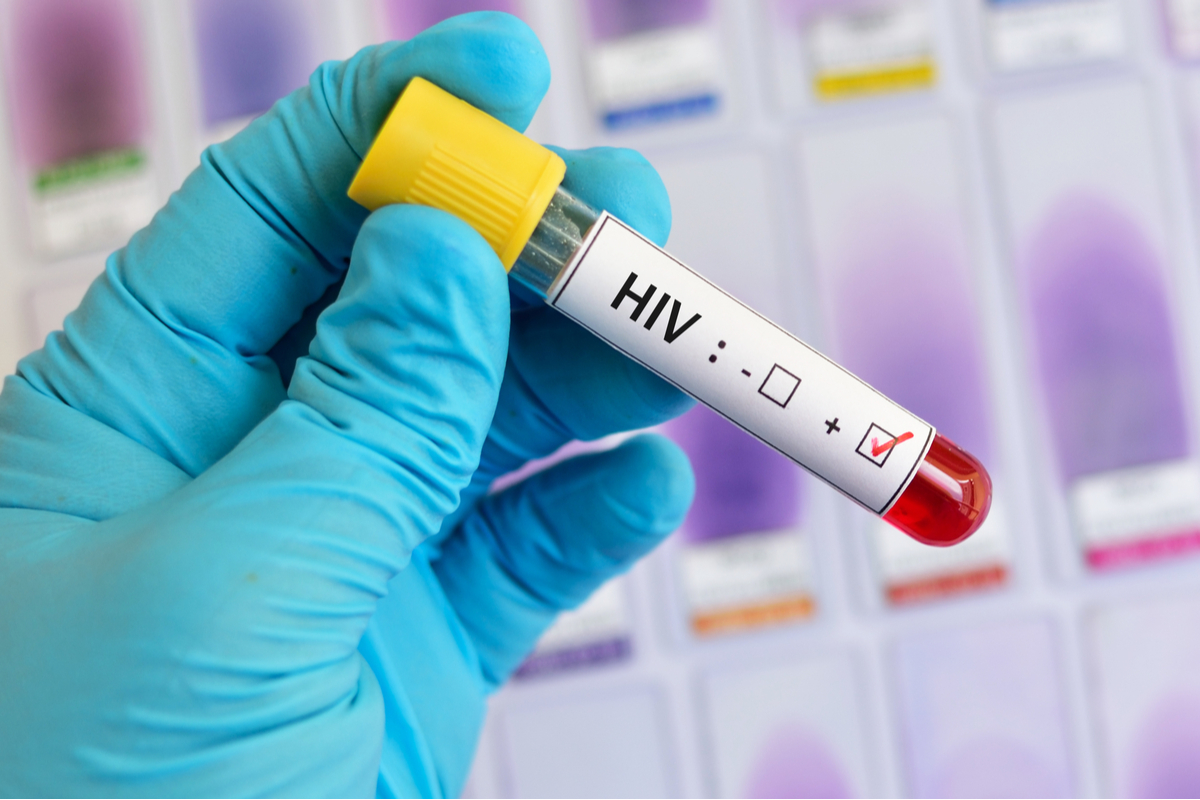HIV is a virus that focuses on and modifies the immune system, raising the risk and consequences of other infections and diseases. The infection could progress to an advanced stage called AIDS without treatment.
Due to the medical developments, the lead to AIDS would be a very rare development for HIV person as they have access to high-quality health care after they start taking HIV medication. HIV is a controllable disease; as experts such as the World Health Organization (WHO) have noticed, many people with HIV have a long, stable life.
A person who tests negative for the virus is now increasing the life expectancy of someone with HIV, given that he or she continues to take drugs called antiretroviral treatment. By 2019, about 68% of adults and 53% of children with HIV had lifelong treatment.
What is HIV?
The full form of HIV is the “human immunodeficiency virus“, and it targets CD4 immune cells. There are forms of T cells.
The white blood cells that circulate identifies diseases and abnormalities throughout the body and abnormalities in other cells.
The HIV targets the immune cells known as CD4, and then, using the cells, it duplicates the virus in the body.
This kills the cells and limits the capacity of the body to fight other diseases and infections. This raises the risk and effects of opportunistic infections and some forms of cancer.
However, it is worth noting that certain persons have HIV without any symptoms for a long duration of time.
HIV is a chronic disease, but it is possible to avoid the virus, and the prevention of transmitting the virus can be carried out with the help of medicines and some techniques.
What is AIDS?
The term AIDS stands for “Acquired immunodeficiency syndrome”. AIDS is known as an advanced stage of HIV infection. AIDS is identified by doctors as having less than 200 cells per millimeter of CD4 count. They will also be able to detect AIDS whether a person has typical opportunistic infections, and associated cancer or both. When a person with HIV is not treated, it is possible that AIDS will grow with affecting the immune system. However, the progression of AIDS in antiretroviral therapy has become more and more uncommon. About 1.1 million individuals living with HIV in the U.S. and 6,000 deaths associated with AIDS were reported in 2018.
Symptoms of HIV
HIV reaches the clinical latency phase after the first month. This phase can last from 2 years to several decades.
During this time, some people have no symptoms; others may have mild or non-specific symptoms. A symptom that is nonspecific is not related to any particular illness or disorder.
Nonspecific symptoms are listed below:
- headaches and other aches and pains
- recurrent fevers
- swollen lymph nodes
- recurrent oral or vaginal yeast infections
- shingles
- nausea
- pneumonia
- night sweats
- fatigue
- diarrhea
- vomiting
- Reduction in weight
- skin rashes
As in the beginning, HIV is still transmittable without symptoms and can still be transmitted to another person during this time.
Causes of HIV/AIDS
HIV is a contagious virus. It can spread during
- Pregnancy
- Childbirth
- Breastfeeding
- Through sexual contact
- Through Blood
- From mother to child.
How does HIV become AIDS?
HIV kills the cells of CD4T. White blood cells play an essential role in fighting diseases in the body. The fewer CD4 T-cells you have, the weaker is the immune system.
For years before it becomes AIDS, you can have HIV infection, with little to no symptoms if you have a CD4T-cell count below 200 or have an AIDS-defining complication, like severe infection or cancer.
Diagnostic tests for HIV/AIDS
Various tests for diagnostic HIV can be used. Providers of healthcare decide which test is best for any individual.
· Antibody/antigen tests
The most commonly used tests for HIV are antibody/antigen tests. In the duration of 18 to 45 days, someone initially contracted with HIV; usually result in positive.
The test checks the blood, which includes antibodies and antigens. An antibody is known as a protein that the body produces to respond to an infection.
An antigen is known as a part of the virus that activates the immune system.
· Antibody tests
These tests just search for antibodies in the blood. Most people will produce detectable HIV antibodies in their blood or saliva between 23 and 90 days after the transmission.
These tests are performed by blood tests or mouth swabs, and no preparation is needed.
Some tests may be done in a healthcare office or laboratory within 30 minutes or less.
Antibody tests can also be performed at home:
- OraQuick HIV Test. The results of an oral swab can come within 20 minutes.
- Home Access HIV-1 Test System: They give a blood sample to a licensed laboratory by pricking the finger of the infected person. They will stay anonymous, and the very next day, they call for the results.
If a suspect that a person is exposed to HIV but tested negatively in a home test, the test should be repeated within three months.
If the result is positive, the reports should be tested by the professional health care provider.
· Nucleic acid test (NAT)
For general screening, this test is not used as it is pricey. This is for individuals with or who have early signs of HIV. This test searches for the virus itself and doesn’t seek the antibodies.
HIV can be detected in the blood from 5 to 21 days.
This test is usually confirmed when an antibody test is carried out. HIV testing is now simpler than ever.
How HIV spreads?
In order to get HIV infected, the body must be infected with blood, semen or vaginal secretions. This can result due to various reasons:
· Having sex
You may get infected if you have sexual or oral, anal intercourse with an infected partner whose blood, semen or vagina secretions enter your body.
The virus may reach your body through mouth sores or tears that often grow during sexual intercourse inside the rectum or vagina.
· Sharing needles
Sharing IV drug paraphernalia (needles and syringes) means you are at the greatest risk for HIV and other infectious diseases such as hepatitis.
· Blood transfusions
In certain cases, blood transfusions may spread the virus. The blood supply is screened for antibodies of HIV from American hospitals and blood banks to reduce the risk
· Pregnancy/Delivery/Breastfeeding:
The virus can pass on to the babies by infected mothers. Moms who are HIV positive and receive care during their pregnancy may reduce the risk for their babies significantly.
How doesn’t HIV spread?
By simple touching, you cannot get infected with HIV. This means that you can’t catch HIV or AIDS with a person who has the infection by hugging, kissing, dancing or shaking hands. Air, water, or insect bites do not transmit HIV.
Prevention and Awareness of HIV
No cure for HIV infection vaccine and no AIDS are available. But you and others should guard themselves against infection.
To prevent the spread of HIV, adapt the following medicines and lifestyle:
1. Use treatment as prevention
You will protect your partner from being infected by the virus by taking the proper medication for HIV. You will not pass this virus to another individual if you ensure that your viral load remains undetectable — a blood test shows no virus.
TasP means you take your medicine just as you have been prescribed, and daily checks are carried out.
2. Use post-exposure prophylaxis if you have been exposed to HIV
Call your doctor or visit the emergency department of the hospital if you think that you are susceptible to the condition by sex, needles or workplace.
PEP will significantly reduce the risk of being infected with HIV as soon as possible within the first 72 hours. You need to take the medicines for 28 days if necessary.
3. Preexposure prophylaxis
Emtricitabine plus tenofovir (Truvada) and emtricitabine plus tenofovir alafenamide (Descovy) combination drugs are able to minimize the risk to sexually transmitted individuals with very high risks of HIV infection.
According to the CDC, PrEP will reduce your risk of getting HIV from sex by more than 90% and from injection medications by more than 70%. Descovy was not studied in people with receptive vaginal sex.
Your physician can only recommend these anti–HIV medicines if you don’t have an HIV infection. Before you begin taking PrEP, you will need an HIV test, and after every three months, you need to continue taking the test.
Before prescribing Truvada, the doctor will also test your kidneys and continue to test them every six months.
Every day, you must take the medications properly. STIs are unavoidable, but you still need to practice safe sex. If you have hepatitis B, you should be tested before starting treatment by an infectious disease or liver specialist.
4. Tell your sexual partners if you have HIV
It should be told that you are HIV-positive to all of your present and past sex partners. They should get it tested too.
5. Use a clean needle
Make sure that it is sterilized and do not share a needle while injecting drugs. Ask for help in order to save yourself from the use of drugs.
6. If you’re pregnant, get medical care right away
You can transfer the infection to your baby if you are HIV-positive. However, you can significantly reduce your baby risk if you receive treatment during pregnancy.
7. Consider male circumcision
Male circumcision has been shown to help reduce the risk for HIV infection










